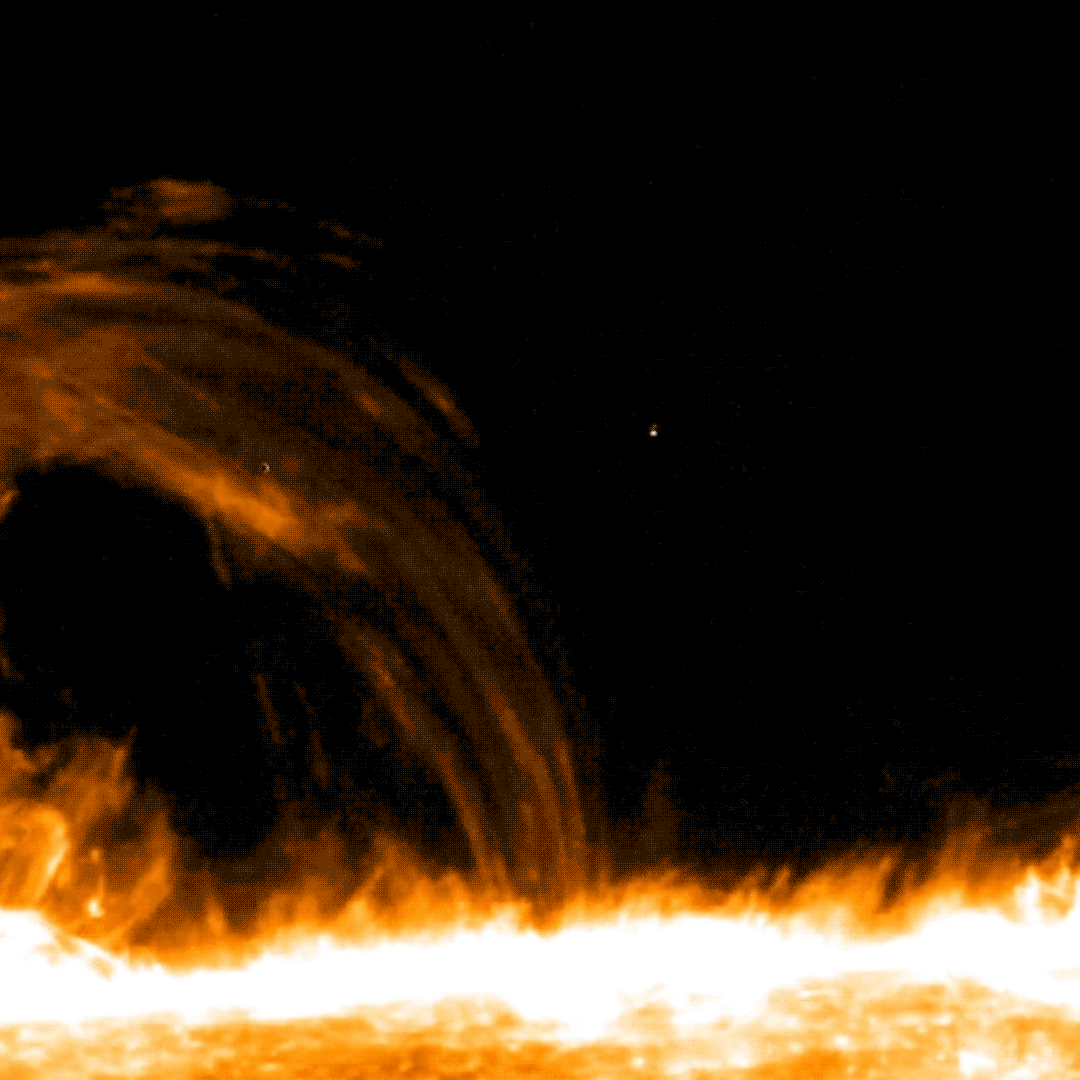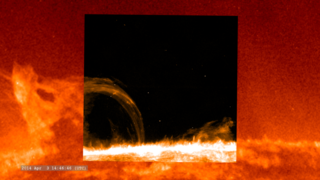Sun
ID: 13691
In pursuit of understanding why the Sun's atmosphere is so much hotter than the surface, and to help differentiate between a host of theories about what causes this heating, researchers turn to NASA's Interface Region Imaging Spectrograph (IRIS) mission. IRIS was finely tuned with a high-resolution imager to zoom in on specific hard-to-see events on the Sun.
A paper published in Nature on Sept. 21, 2020, reports on the first ever clear images of nanojets — bright, thin lights that travel perpendicular to magnetic structures in the solar atmosphere called the corona — in a process that reveals the existence of one of the potential coronal heating candidates: nanoflares.

NASA’s IRIS spots Nanojets: Shining light on heating the solar corona
A paper published in Nature on Sept. 21, 2020, reports on the first ever clear images of nanojets — bright, thin lights that travel perpendicular to magnetic structures in the solar atmosphere called the corona — in a process that reveals the existence of one of the potential coronal heating candidates: nanoflares.

Source Material
Credits
Scientist:
Patrick Antolin (Northumbria University)
Data Visualizer:
Tom Bridgman (Global Science and Technology, Inc.)
Producer:
Joy Ng (USRA)
Writer:
Susannah Darling (ADNET)
Patrick Antolin (Northumbria University)
Data Visualizer:
Tom Bridgman (Global Science and Technology, Inc.)
Producer:
Joy Ng (USRA)
Writer:
Susannah Darling (ADNET)
Please give credit for this item to:
NASA's Goddard Space Flight Center
NASA's Goddard Space Flight Center
Short URL to share this page:
https://svs.gsfc.nasa.gov/13691
Mission:
IRIS: Interface Region Imaging Spectrograph
Keywords:
NASA Science >> Sun
SVS >> IRIS Mission
SVS >> Nanoflare
SVS >> Coronal Heating
https://svs.gsfc.nasa.gov/13691
Mission:
IRIS: Interface Region Imaging Spectrograph
Keywords:
NASA Science >> Sun
SVS >> IRIS Mission
SVS >> Nanoflare
SVS >> Coronal Heating












